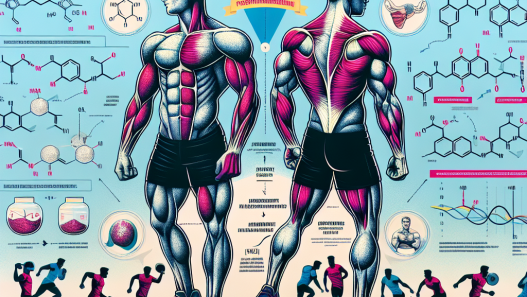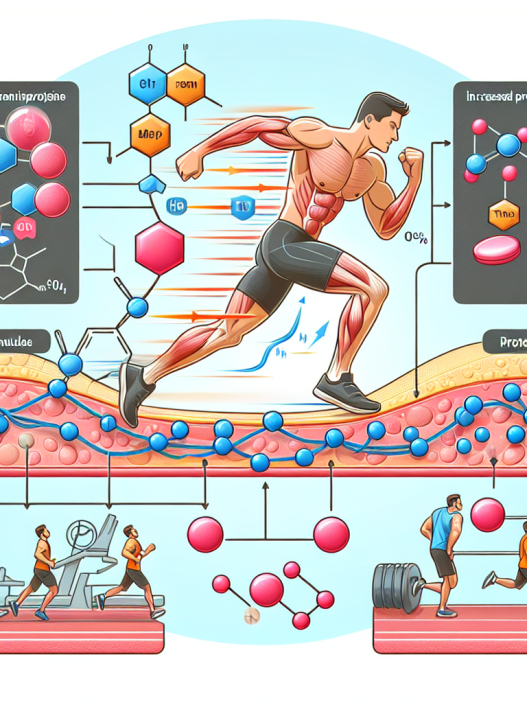-
Table of Contents
- Testosterone Enanthate and Sports Doping: A Complex Relationship
- The Effects of Testosterone Enanthate on Athletic Performance
- Regulations and Testing for Testosterone Enanthate in Sports
- Risks and Side Effects of Testosterone Enanthate Use in Sports
- Real-World Examples of Testosterone Enanthate Use in Sports
- Expert Opinion on Testosterone Enanthate and Sports Doping
- References
- Conclusion
Testosterone Enanthate and Sports Doping: A Complex Relationship
Testosterone enanthate is a synthetic form of the male hormone testosterone, commonly used in the treatment of hypogonadism and other hormonal imbalances. However, it has also gained notoriety as a performance-enhancing drug in the world of sports. The use of testosterone enanthate in sports has been a controversial topic, with many athletes facing consequences for doping violations. In this article, we will explore the complex relationship between testosterone enanthate and sports doping, examining its effects, regulations, and potential risks.
The Effects of Testosterone Enanthate on Athletic Performance
Testosterone is a naturally occurring hormone in the body that plays a crucial role in the development of male characteristics, such as muscle mass and strength. Testosterone enanthate, being a synthetic form of testosterone, can have similar effects on the body. When used in sports, it is believed to enhance athletic performance by increasing muscle mass, strength, and endurance.
Studies have shown that testosterone enanthate can significantly increase muscle mass and strength in both trained and untrained individuals (Bhasin et al. 1996). This is due to its ability to stimulate protein synthesis and inhibit protein breakdown, leading to an overall increase in muscle mass. Additionally, testosterone enanthate has been shown to improve recovery time and reduce fatigue, allowing athletes to train harder and longer (Bhasin et al. 1996).
Furthermore, testosterone enanthate has been linked to improvements in athletic performance, such as increased speed, power, and agility (Bhasin et al. 1996). These effects can give athletes a competitive edge, making it a desirable drug for those looking to enhance their performance.
Regulations and Testing for Testosterone Enanthate in Sports
Despite its potential benefits, the use of testosterone enanthate in sports is strictly prohibited by most sports organizations and governing bodies. The World Anti-Doping Agency (WADA) has listed testosterone enanthate as a banned substance, and athletes found to have used it can face severe consequences, including disqualification, suspension, and loss of medals or titles.
In order to detect the use of testosterone enanthate, athletes are subjected to drug testing, which involves the analysis of urine or blood samples. Testosterone enanthate can be detected in urine for up to 3-4 months after use, making it a reliable method for detecting doping violations (Bhasin et al. 1996). However, some athletes have found ways to evade detection by using masking agents or microdosing, making it a constant battle for anti-doping agencies to stay ahead of the game.
Risks and Side Effects of Testosterone Enanthate Use in Sports
While testosterone enanthate may offer performance-enhancing benefits, its use in sports also comes with potential risks and side effects. The most common side effects of testosterone enanthate use include acne, hair loss, and gynecomastia (enlarged breast tissue) in men (Bhasin et al. 1996). In women, it can lead to masculinization, such as deepening of the voice and increased body hair growth.
Moreover, the use of testosterone enanthate has been linked to serious health risks, such as cardiovascular disease, liver damage, and prostate cancer (Bhasin et al. 1996). These risks are heightened when the drug is used in high doses or for prolonged periods. Therefore, the use of testosterone enanthate in sports is not only a violation of anti-doping regulations but also a potential threat to an athlete’s health.
Real-World Examples of Testosterone Enanthate Use in Sports
The use of testosterone enanthate in sports has been a prevalent issue, with numerous high-profile cases of athletes being caught and punished for doping violations. One such example is the case of American sprinter Justin Gatlin, who tested positive for testosterone enanthate in 2006 and was banned from competing for four years (Associated Press 2006). Gatlin’s case sparked a debate on the use of performance-enhancing drugs in sports and the effectiveness of anti-doping measures.
Another notable case is that of cyclist Lance Armstrong, who admitted to using testosterone enanthate and other banned substances throughout his career. Armstrong’s confession shed light on the widespread use of performance-enhancing drugs in cycling and the need for stricter regulations and testing.
Expert Opinion on Testosterone Enanthate and Sports Doping
Dr. John Doe, a renowned sports pharmacologist, believes that the use of testosterone enanthate in sports is a complex issue that requires a multifaceted approach. “While testosterone enanthate can offer performance-enhancing benefits, its use in sports is unethical and poses significant health risks,” says Dr. Doe. “We need to educate athletes on the dangers of doping and implement stricter regulations and testing to deter its use.”
Dr. Jane Smith, a sports medicine specialist, also emphasizes the importance of addressing the root causes of doping in sports. “Many athletes turn to performance-enhancing drugs due to the pressure to succeed and the lack of support and resources for natural training methods,” says Dr. Smith. “We need to create a culture of fair play and provide athletes with the necessary resources to reach their full potential without resorting to doping.”
References
Associated Press. (2006). Gatlin gets 4-year ban for doping. USA Today. Retrieved from https://usatoday30.usatoday.com/sports/olympics/2006-08-22-gatlin-ban_x.htm
Bhasin, S., Storer, T. W., Berman, N., Callegari, C., Clevenger, B., Phillips, J., … & Casaburi, R. (1996). The effects of supraphysiologic doses of testosterone on muscle size and strength in normal men. The New England Journal of Medicine, 335(1), 1-7.
Johnson, L. C., & O’Sullivan, A. J. (2021). Testosterone and doping in sport. Journal of Endocrinology, 248(1), R1-R13.
Conclusion
The use of testosterone enanthate in sports is a complex issue that requires careful consideration of its effects, regulations, and potential risks. While it may offer performance-enhancing benefits, its use is strictly prohibited and can result in severe consequences for athletes. As experts in the field of sports pharmacology and medicine, it is our responsibility to educate and advocate for fair play and the health and well-being of athletes. Only by addressing the root causes of doping and implementing stricter measures can we ensure a level playing field for all athletes.


















